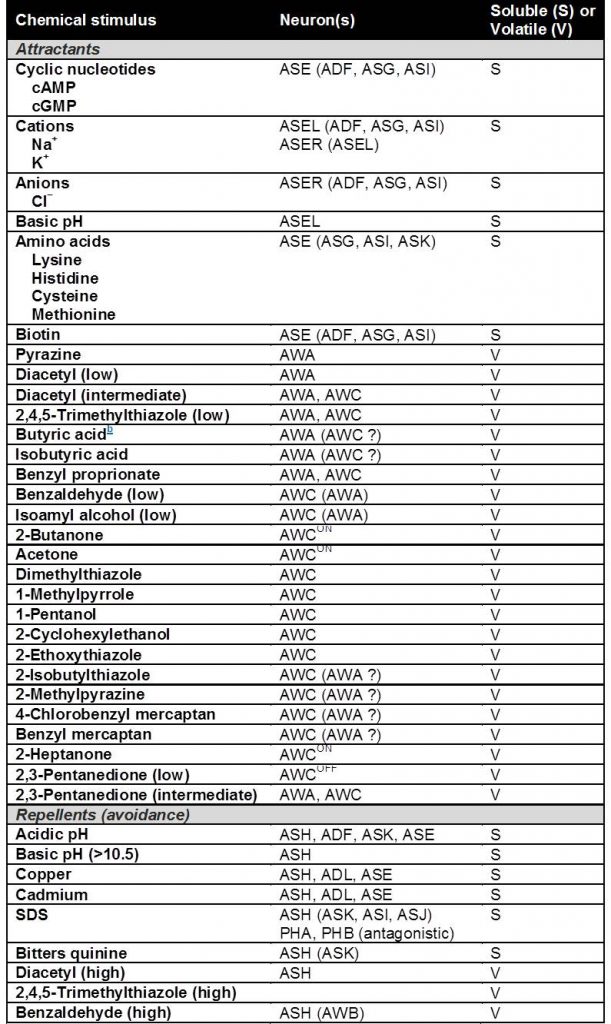
The article focuses specifically on behavioral responses of C.elegans to attractants and repellents, chemosensory neuron physiology, and chemosensory signal transduction molecules and pathways. An update of the knowledge in the field was published by Denise M. Ferkey, Piali Sengupta and Noelle D. L’Etoile in March 2021, in Genetics.
The complex natural environment of C. elegans necessitates that these animals be able to sense and respond robustly and sensitively to a range of chemical cues for optimal survival and reproduction.
In Table 1 it’s provided a nonexhaustive list of water-soluble and volatile compounds that have been demonstrated to attract or repel wild-type animals (defined here as the Bristol N2 strain) in the laboratory. As in other animals, the behavioral responses of C. elegans to a specific chemical can depend on its concentration. For instance, a subset of the chemical cues that are attractive at low concentrations can elicit avoidance responses at high concentrations.

Ferkey DM, Sengupta P, L’Etoile ND.
